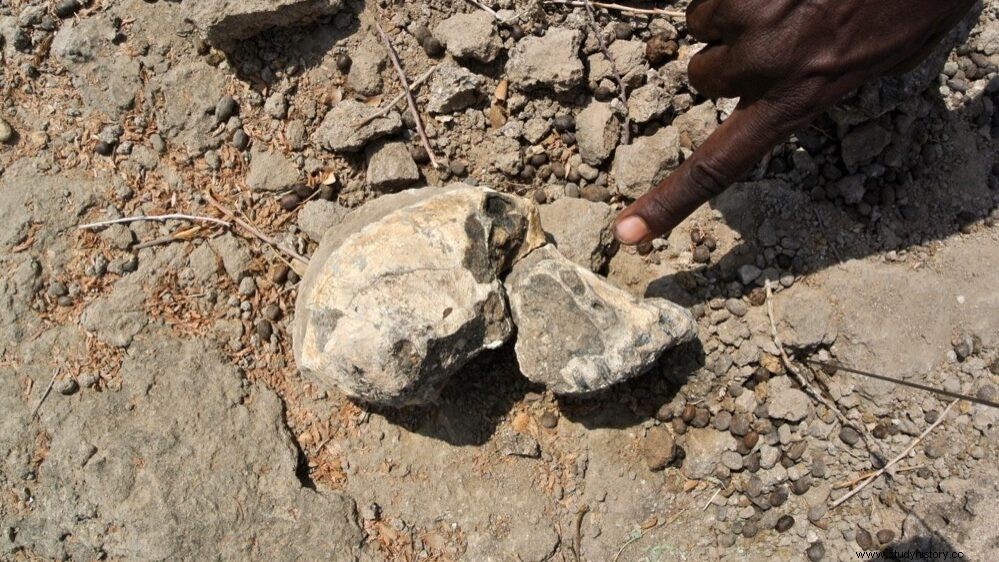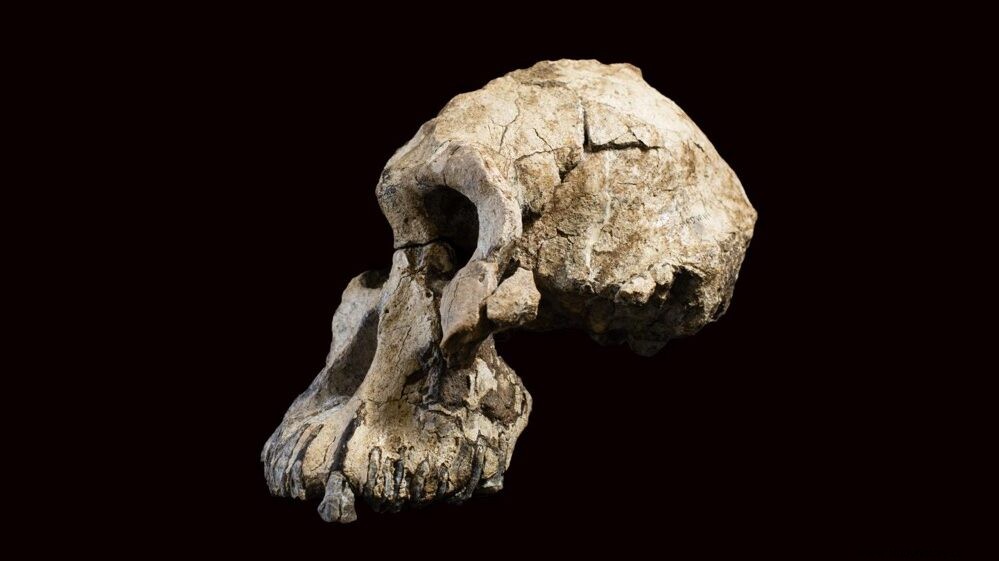Australopithecus anamensis it is the first known species of Australopithecus , widely accepted as the progenitor of the famous Lucy's species, Australopithecus afarensis . Until now, A. anamensis it was mainly known only from remains of jaws and teeth. Yohannes Haile-Selassie of the Cleveland Museum of Natural History, Stephanie Melillo of the Max Planck Institute for Evolutionary Anthropology, and her colleagues have discovered the first skull of A. anamensis at the paleontological site of Woranso-Mille, in the Afar region, Ethiopia.
This 3.8-million-year-old fossil skull represents a time interval between 4.1 and 3.6 million years ago, when A. anamensis gave rise to A. afarensis . The researchers used the morphological features of the skull to identify which species the fossil represents.

The characteristics of the upper jaw and the canine tooth were essential to determine that it is attributable to A. anamensis Melillo said. This skull demonstrates that A. anamensis and A. afarensis they coexisted for approximately 100,000 years. This temporal overlap challenges the widely accepted idea of a linear transition between these two early human ancestors. According to Haile-Selassie:This represents a change in our understanding of human evolution during the Pliocene.
The team of researchers, who have been working at the site for the past 15 years, discovered the skull in February 2016. In the years following its discovery, paleoanthropologists on the project carried out extensive analysis while geologists worked to determine the age of the skull. and the context of the specimen. The results of the team's findings were published in two articles in the international scientific journal Nature .
The skull was found in the sandy deposits of a delta where a river emptied into a lake. The river likely originated in the highlands of the Ethiopian plateau, while the lake developed at lower elevations, where rift activity caused the Earth's surface to stretch and thin, creating the region's lowlands. from Afar. Fossil pollen grains and chemical remains of fossil plants and algae that are preserved in lake and delta sediments provide clues to ancient environmental conditions. They specifically indicate that the lake basin was mostly dry, but that there were also forested areas on the banks of the delta or along the bank of the river that fed the delta and the lake system. The individual in question lived near a large lake in a dry region.

Australopithecus anamensis it is the oldest known member of the genus Australopithecus . Due to the rare near-complete state of the skull, the researchers identified facial features never before seen in the species. Has a mixture of primitive and derived facial and cranial features that I did not expect to see in a single individual Haile-Selassie said.
Some features were shared with later species, while others had more in common with even older groups of early human ancestors such as Ardipithecus and Sahelanthropus . Until now, we had a big gap between the oldest known human ancestors, which are about 6 million years old, and species like Lucy, which are between two and three million years old. One of the most exciting aspects of this discovery is the way it bridges the morphological gap between these two groups Melillo said.
The new skull allowed the researchers to characterize the frontal morphology in A. anamensis and recognize that these features differed from the morphology common to the Belohdelie frontal and other cranial specimens already known for Lucy's species. As a result, the new study confirms that the Belohdelie frontal belonged to an individual of Lucy's species. This identification extends the oldest record of A. afarensis to 3.9 million years ago, while the discovery of the skull pushes the latest appearance date of A. anamensis forward to 3.8 million years, indicating the overlap period of at least 100,000 years.
